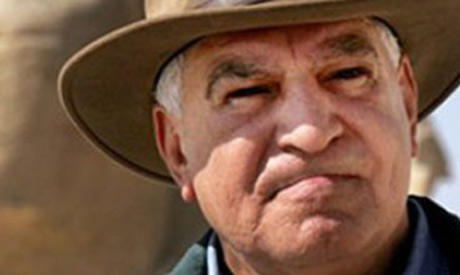
Zahi Hawass, former Egypt's top antiquities official (Photo: AP)
This was one of my great adventures — searching for the mummies of the boy-king Tutankhamun’s family.
We did not know who the father of the boy-king was. Was it Akhenaten? Or was it Amenhotep III? After all, there is an inscription that says that the boy-king was raised in Amarna and that his father was Akhenaten. But then again, there is another inscription that says that when the boy-king went to Thebes he called Amenhotep III his “father”.
Who was Tutankhamun’s mother? Some people have thought that his mother must have been Kiya, a foreign queen whom Akhenaten married. Others believe that his mother could have been queen Tiya, Amenhotep III’s wife, or even Nefertiti, Akhenaten’s queen. To add to all those questions, the mummy of queen Tiya has never been found.
I began my investigation and my new dance with the mummies. First, we looked at the surviving mummies that belonged to the family of the boy-king. There were those of Yuya and Tuya, the father and mother of queen Tiye and Amenhotep III’s in-laws who had been buried in a tomb in the Valley of the Kings. There was also the mummy of Amenhotep III and the mummy of the golden boy-king.
We then began the search for mummies that we thought might belong to the same family as Tutankhamun. There was a mummy found in tomb KV55 in the Valley of the Kings that some scholars thought could belong to Akhenaten and others thought belonged to Semenkhkare. We did DNA tests to find out if this mummy was really that of Akhenaten, the son of Amenhotep III. We found that the mummy was indeed that of Amenhotep III’s son and Tutankhamun’s father, meaning that the KV55 mummy was that of Akhenaten.
The next step was to look at two mummies found in tomb KV36 known as the “Elder Lady” and the “Younger Lady”. We found that the “Elder Lady” was in fact the mummy of queen Tiye, discovered by comparing her DNA with that of Yuya and Tuya whom we knew were Tiye’s parents. We also compared her DNA with a lock of hair that the British archaeologist Howard Carter had found in a small coffin with the name of Tiye written on it inside Tutankhamun’s tomb. The DNA of the lock of hair and that of the “Elder Lady” were identical. The mummy of the “Elder Lady” was thus confirmed to be that of queen Tiye, the wife of Amenhotep III and mother of Akhenaten.
The final mummy was of the “Younger Lady.” When we compared her DNA with that of the mummy of Tutankhamun, we found that she was the mother of the boy-king. When we compared her DNA with that of the mummies of queen Tiye and Amenhotep III, we found that she was their daughter. This meant that the “Younger Lady” was in fact the mother of Tutankhamun and the daughter of Amenhotep III and queen Tiye, making her the sister-wife of Akhenaten.
It was quite a find.
*A version of this article appears in print in the 3 October, 2019 edition of Al-Ahram Weekly.
Short link: